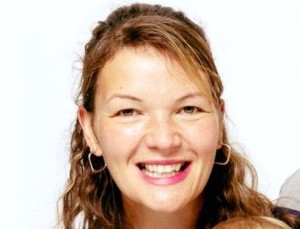Job insecurity remains big concern for mortgage holders
While unemployment is rising and is a major concern for mortgage holders and potential home buyers, it is not forcing first home buyers out of the market.
Friday, November 8th 2024, 9:25AM

In fact, CoreLogic’s latest data show first home buyers account for 27% of purchases, well above the long-term average of 21%.
However, job insecurity remains one of the biggest worries of mortgage holders and potential home buyers.
Unemployment has risen from 4.6% to 4.8% in the three months ended September, fuelled by reduced demand for workers as migration surged to fill previous labour market shortages.
The rate is the highest since December 2020 but below the RBNZ’s expectations of 5% unemployment.
This year more than as 45,700 people who had been employed became jobless and 57,000 left the labour force, either discouraged from seeking a job, studying, disability, retirement or the high cost of childcare.
Since independent economist Tony Alexander started his monthly survey of real estate agents in the middle of 2020, on average 20% of agents have said buyers are worried about their jobs.
In January this year, the reading was at only 14% but it peaked at 56% in June and now sits at a still high of 48%.
The RBNZ says rising unemployment is affecting more households, making it more difficult to service loans and causing higher levels of bad debt.
"Banks have reported to us that many highly indebted households have little income or savings buffers available. This makes them vulnerable to unanticipated costs or losses of income."
The other top concern is buyers being able to get the finance they want. While worries about access to finance are dropping, they are still well above levels before late-2021 when changes were made to the CCCFA.
In contrast, there is has been a collapse in concerns about high interest rates, with just 1% of agents saying buyers are worried about a rise in rates, but they are still a burden on households.
Stats NZ data on household living-costs price indexes (HLPIs), which includes interest payments, show in the three years since September 2021, those payments have increased 117%. Over the same period, the CPI, which includes the cost of building a new home, increased 15.7%.
“Mortgage interest payments remain high and continue to contribute significantly to living costs for many households,” Nicola Growden, Stats NZ consumer prices manager says.
In the year to September, interest payments were up 18.2%, a slower pace of increase than the more than 40% at the peak of the rate rises. The cost of building a new home increased 2.5 percent in the same period.
Interest rates started to fall in the past six months and Reserve Bank figures show $50 billion worth of mortgages are due to be refixed by the end of the year, most to short six-month to one-year terms in anticipation of further OCR cuts.
Economists expect retail mortgage rates to drift down to between 5.5-5% percent, although there is uncertainty where the end point of the RBNZ’s easing cycle is.
Movements in the OCR would normally take 12 to 18 months to flow through, but because more people were fixing for short-terms at present, the lag is more like six months.
Shifting the dial
Meanwhile first home buyers (FHBs) are taking advantage of low-deposit lending speed limits, tapping their KiwiSaver for part of a deposit, as well as showing a willingness to compromise on location and property type to get on the property ladder.
“The allure of 'a foot on the ladder' clearly remains strong, especially in the current market where house prices are down and abundant listings favour buyers,” Kelvin Davidson, CoreLogic’s chief property economist says.
He says the Government’s removal of the First Home Buyer Grant scheme has not been a noticeable barrier for these buyers.
The latest data shows the median price paid by FHBs has fallen in recent years, from $715,000 in 2022, to $695,000 last year, and $685,000 across the first nine months of 2024.
“That’s despite standalone houses, usually larger and pricier properties, making up a higher share of FHB purchases this year,” he says, pointing to today’s figure of 73% versus 70% in 2023.
Despite the strength of the segment, affordability constraints are forcing FHBs to change their behaviour.
Going back to 2019 and 2020, standalone houses accounted for more than 75% of FHBs’ purchases, suggesting that as affordability constraints have intensified over the past few years, FHBs have been prepared to change.
| « New customers locked out of ASB’s pre-approvals | Vincent Capital adds a South Island BDM » |
Special Offers
Comments from our readers
No comments yet
Sign In to add your comment
| Printable version | Email to a friend |



